Molecular interaction analysis: SPR and flow cytometry
SPR
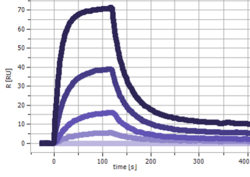
Surface plasmon resonance (SPR) is an optical-based, label-free detection technology for real-time monitoring of binding interactions between two or more molecules. A wide range of molecules can be studied, from ions and fragments to proteins and viruses. This innovative technology is capable of providing biophysical data such as affinity, kinetics and thermodynamics, in addition to answering basic questions of binding specificity and concentration. We offer services with the MASS-16 instrument. If you wish to learn more about the technology than described below, please, visit the instrument homepage.
MASS-16 instrument
MASS-16™ (Molecular Affinity Screening System) is a biosensor that allows you to study the interaction between two biomolecules in real time. The MASS-16 equipment uses a detection system that is based on surface plasmon resonance (SPR), and you measure the interaction in real time without the need for any labeling of reagents.
- high-throughput kinetic analysis, 96 and 384 well based platform
- eight dual sensor flow cells enable to analyse 8 different samples simultaneously
- easy software to build the assay method and analyse the data.
- integrated with a robotic arm and a stacker for up to 12 plates
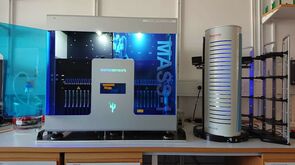
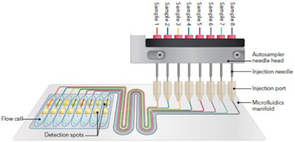
Flow cytometry
Flow cytometry is a laser-based technology to analyze the physical and chemical characteristics of a cell surface and intracellular molecules or particles.
We have 3 different instruments available; each of them serves a different propose. The iQue manages high throughput screening flow cytometry, FACS Arian is a cell sorting instrument and FACS Canto is an instrument for cell characterization.
iQue
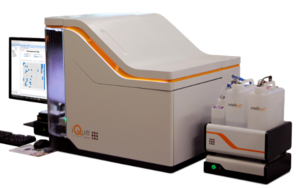
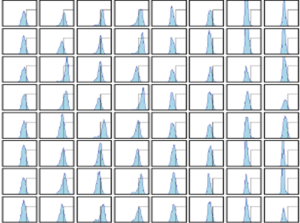
User friendly flow cytometer for multiplexed analysis of cells and beads in suspension, for more details, please, visit the instrument homepage.
- rapid flow cytometry analysis in 96 (10 min) or 384 (30 min) format
- three-laser configurations (Violet-Blue-Red laser)
- multiplexed analysis up to 15 detection channels
- minimal problems with small numbers of cells (5000 or less no problem)
- detection rate up to 35000 events/second
- minimum sample volume 2µl
- combining cell and bead analysis in the same well
- 7 decades dynamic range (i.e., it is possible to analyze bacteria)
- scale down the assay to save reagent (20µl reaction volume)
- user-friendly analysis software that makes it possible to analyze/visualize data in an easy way
BD FACS Canto
FACS Canto has 2 lasers and can analyze 6 different fluorochromes (only analysis, no sorting). It has an available carousel for automatic feeding of 40 FACS tubes per analysis.
FACS Arian IIu
FACS Arian has 4 lasers and can analyze and sort based on 12 different fluorochromes. It can sort out 4 different fractions at the same time, alternatively, it sorts into plates (96 holes or 384 holes).
